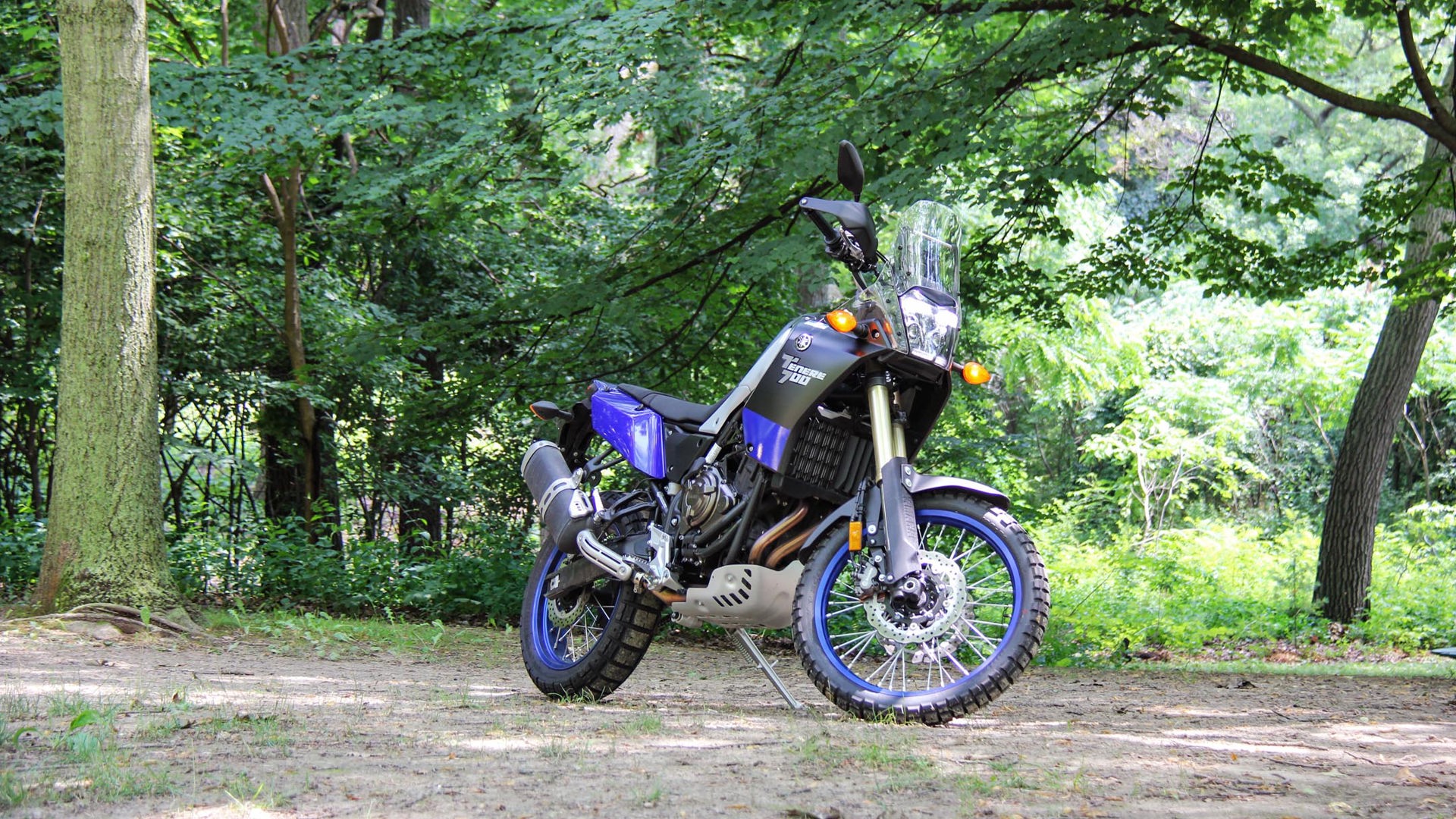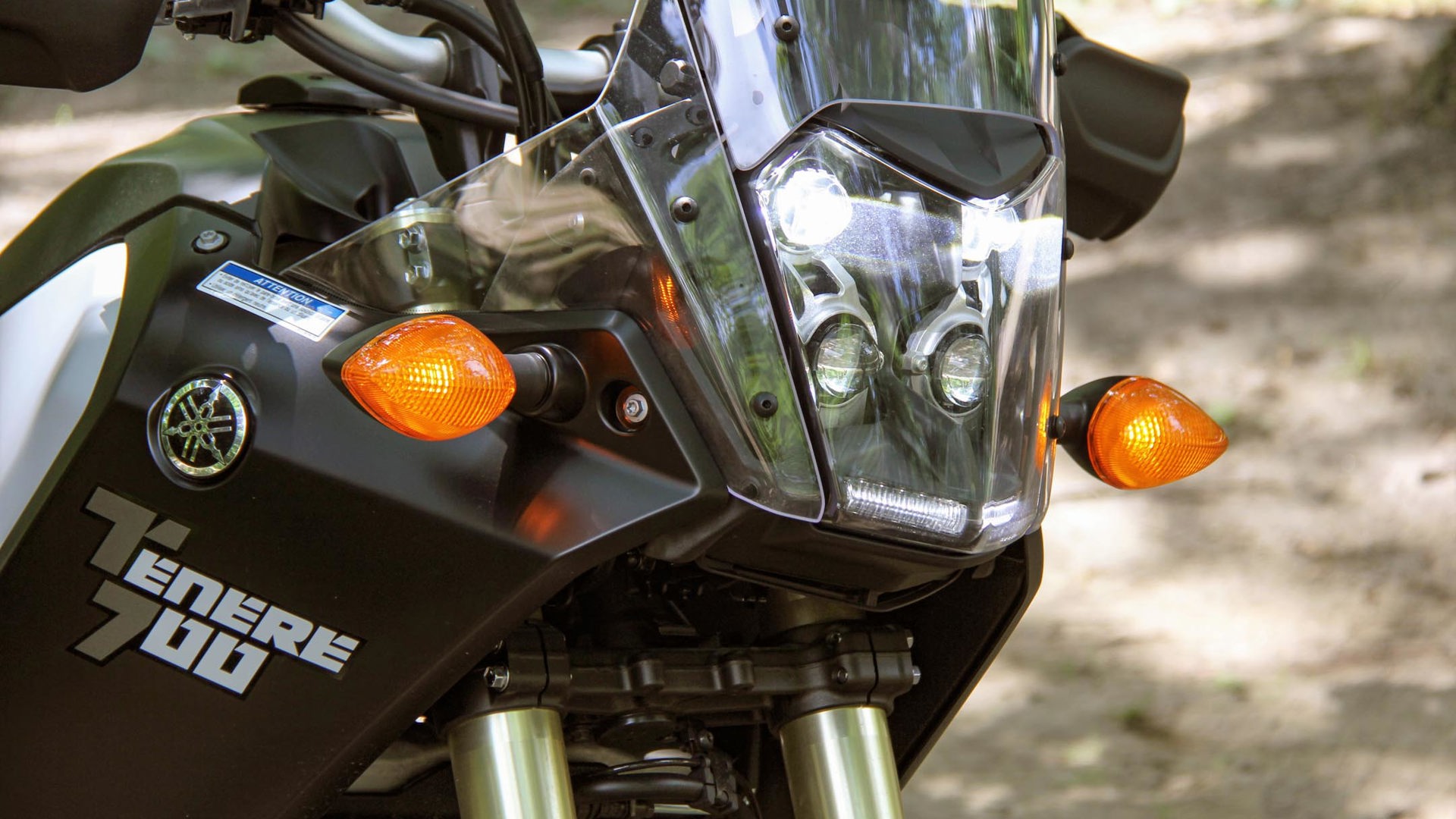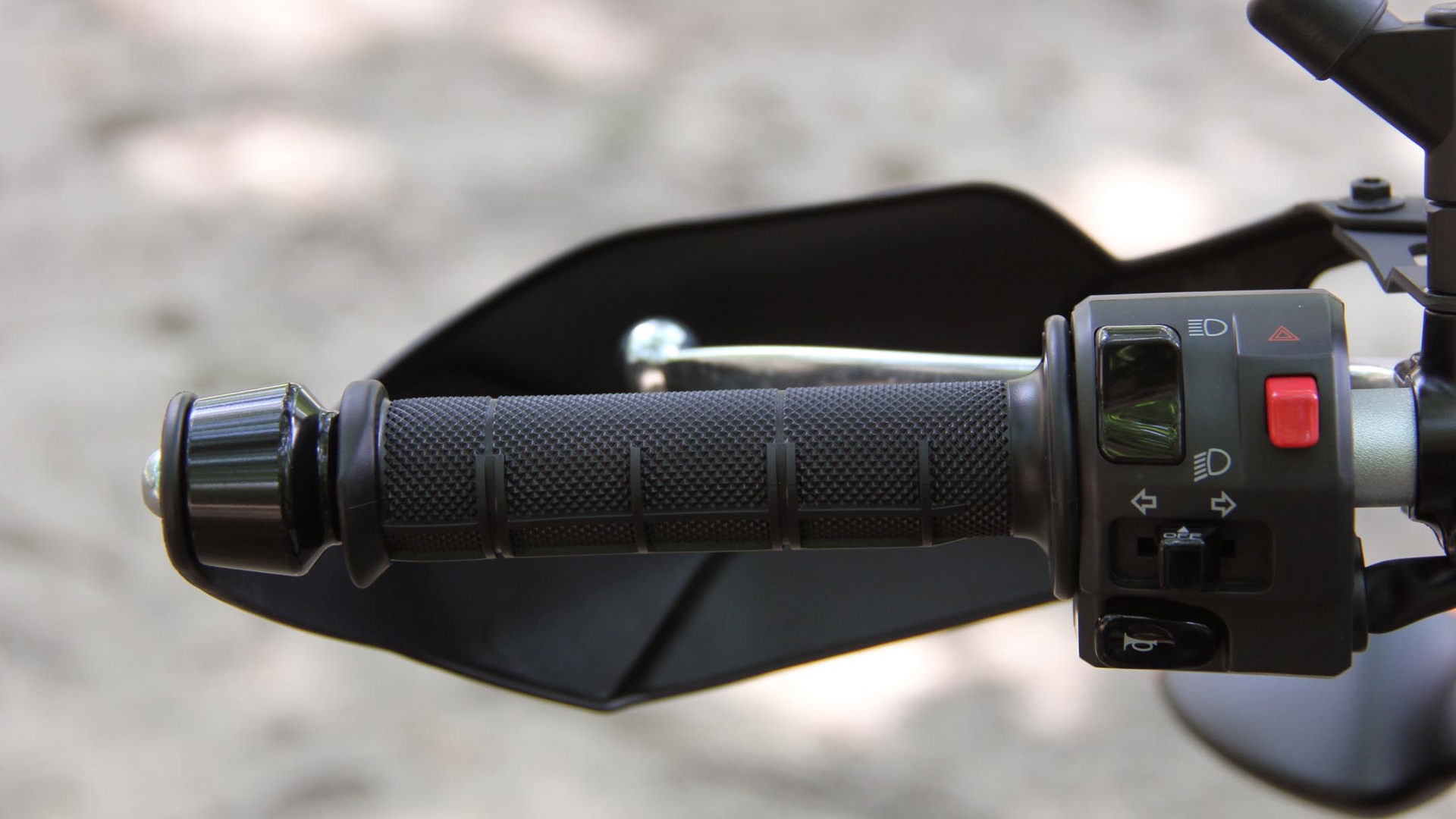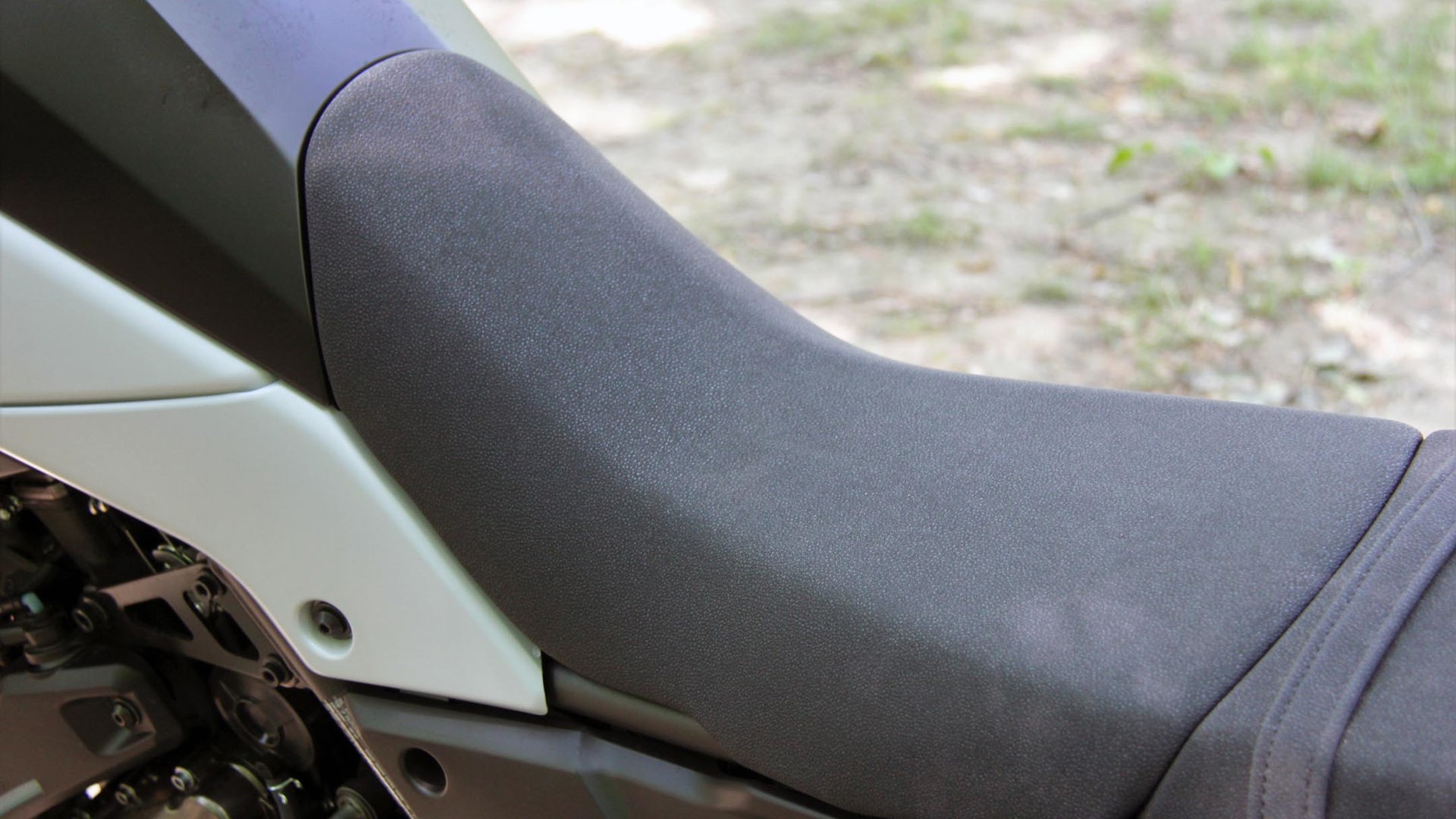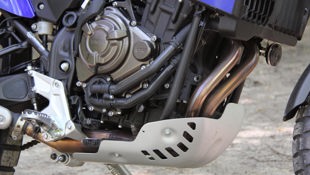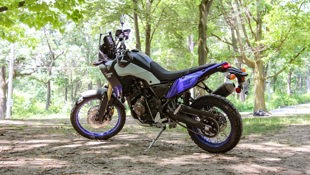Originally published on Canada Moto Guide: Review: 2021 Yamaha Tenere 700
As sport bike sales in Canada continue to plummet, the dual sport segment conversely just gets hotter, more crowded, and competitive. The recent pandemic has only accelerated this trend, as people are looking at creative ways to stay active and entertained while also safely socially distancing.
Given that we were privy to our first taste of the new Yamaha Ténéré 700 nearly five years ago, its arrival has been long awaited and highly anticipated. Named after the Ténéré Desert in Africa – an iconic stage of early Dakar rallies – it was designed to be a simple, nimble, go-anywhere adventure bike.
There are lots of cues that Yamaha has done their homework so it would live up to its namesake, offering up a lot of capability and value for its $12,399 sticker price.
The robust skid plate provides added protection for the motor, while the adjustable quad LED headlights brighten the darkness either at night or in a dense forested area. The KYB front 43-mm fork and rear suspension are adjustable, offering 210 mm and 200 mm of travel respectively. The T7 arrives with Pirelli STR M+S tires measuring 21 inches in the front and 18 in the rear. They were well suited to the mix of tarmac, loose dirt, and gravel I rode on, but the hardcore off-road enthusiasts among us will likely switch to more aggressive knobbies.
Perhaps it’s the luddite in me, but oftentimes when I’m introduced to a new technological advancement, I’m skeptical rather than impressed. While some may lament the lack of innovation and features of the Ténéré, I consider having fewer things to fix or replace as a good thing; particularly on a bike that’s just begging to be taken off the beaten path. For instance, the only issues I’ve experienced with my current Ford Mustang GT over the last three years of ownership have been faulty sensors. $250 here, $300 there – all to replace the very things that are supposed to alert me when something goes wrong. But I digress.
The 700 of course refers to Yamaha’s 689 cc CP2 parallel twin that was derived from the MT-07 street bike. This mill has proven to be a well-developed, reliable motor. It is virtually unrecognizable in this platform due to a unique airbox, cooling system, ECU programming, and exhaust – which sounds great by the way. It’s got a nice, hearty rumble at idle. Its 72 hp and 50 lb-ft of torque don’t sound overly impressive, but the gearing combined with a 204 kg (452 lb) wet weight means acceleration feels more than ample. It’s got the torque and sound of a big single, but with less vibration.
Whether navigating tight, technical terrain or passing on the highway, the Ténéré was never lacking in power. During my week on the T7, I spent more time on the highway than I would have liked, but I was surprised how well suited it was to the job. Its wide power band allows it to pull hard through all six gears – even when passing at triple digit speeds. It also offers decent wind protection, has a respectable fuel range and the instrument cluster is easy to read. The vertical LCD screen only features a gear position and fuel indicators, speedometer, tachometer and odometer, but what more to you need?
There aren’t any variable riding scenarios, dynamic stability or traction control modes – only the ability to turn off the ABS. It’s simple and to the point. Nothing to distract your attention from the task at hand. Turning off the ABS system merely requires pushing and holding a button until the “Off Road” light illuminates on the screen. This needs to be repeated every time you shut off the engine or remove the key.
Even at six feet tall with a 32-inch inseam, the Ténéré felt high for me when getting on and off or when stopped. The stock seat sits at 87.8 cm (34.6 in), so I was forced to balance on my tippy toes at stoplights. The height definitely helps with the ground clearance though. The suspension soaks up decent-sized rocks, roots, or moderate bumps without too much fanfare, but is admittedly a bit on the firm side. The Brembo brakes offer a high level of grip with a solid initial bite but also allow for subtle adjustments.
The high, wide handlebars and sturdy pegs allow the rider to easily manoeuvre the bike as needed over rough terrain while standing, but also offer a comfortable riding position while seated. Despite being a parallel twin, the bike feels narrow – making it more reminiscent of a dirt bike than a cumbersome adventure tourer. The handlebars, hand grips, and throttle allow for smooth modulation while standing without having to hunch over. It’s easy to manage off-road and it’s more than happy to lean into a turn on the open road.
The seat is adequate for a few hours of riding, but any more time beyond that in the saddle and you’ll be thinking about the aftermarket options. Europe received shipment of the bike before we did, so there are plenty of accessories available to personalize and make it your own.
Alternatively, you could get yourself into a Suzuki V-Strom 650A with three-level traction control for only $9,699, or the 95-hp KTM 790 Adventure R for $15,499. Both offer additional features which may or may not appeal to you. But if you’re not going to take advantage of the added features, why pay for them?
The Honda NC750X is available for $9,399 (or $10,399 with a DCT) but isn’t nearly as well suited to off-road shenanigans. The Ténéré is a more-than-capable barebones adventure motorcycle that is also just as proficient on the highway or winding backcountry roads. It offers a clean slate for customization at a reasonable price. Nothing more, nothing less.
